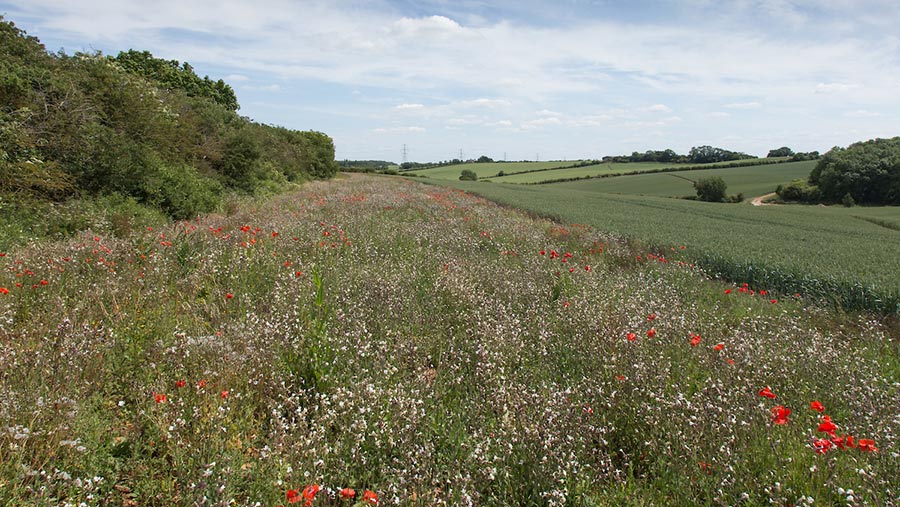Opinion: Here’s to 50 years of environment-friendly farming
 © Tim Scrivener
© Tim Scrivener Back in 1983, Kent farmer Hughie Batchelor got busy clearing woods, trees and hedgerows on the North Downs, to “economically manage his farmland”, as he put it.
He later went to prison for refusing to stop.
Distancing themselves from his activities, the NFU and CLA got together to raise funds for Farming & Wildlife Advisory Group (Fwag) in Kent.
That was how I became only the second farm conservation adviser to be appointed in England – and I’m still here.
See also: Environmental Land Management scheme – what we know so far
When Fwag was first established in 1969, the ground between farming and conservation interests was a no-man’s land, open to hostile fire from either side.
Distant dream
Even in 1983, grants for taking out hedges had only just gone. Stewardship was a distant dream.
Gradually, Fwag’s county-based advisers, working within the industry through farm visits, meetings and real-world demonstrations, were able to show that at a practical level you could farm successfully, and leave room for nature.
Granted, that room was pretty much confined to a field corner with a few trees in it.
If you want to know how much has changed in the subsequent 50 years, just go to Groundswell, or take a look at Farmers Weekly.
Farming with the environment in mind is simply what you do now.
It’s to Fwag’s credit that it got farm thinking out of the field corner and into the mainstream – looking after not just wildlife, but soil and water too.
We realise no-till and cover cropping are as much part of the environment as lapwing and wildflowers.
Fwag advisers are still a distinctive lot.
You don’t meet many people in conservation bodies who have a real grasp of day-to-day farming, and you don’t meet many land agents and the like who really understand pure ecology.
Still in demand
That’s why, after 50 years, Fwag is still in demand.
If the Environmental Land Management (ELM) system comes about as envisaged, we’re going to need more advisers who can sit comfortably between those two worlds.
People who get conservation, but can deliver it on real, productive farms.
I’m reassured by the calibre of people I see coming into the organisation now, often at a younger age than when I started.
It’s not always vital to have a farming background either, more the knowledge, the attitude and the ability to approach farmers.
Our agricultural colleges need to be attuned to this, and not locked into high input agriculture, with the environment hived off into separate courses for wildlife conservation, or countryside management.
While these courses produce proficient, employable people, it’s the agriculture courses that should be producing the environmental land managers of the future.
There are plenty of practicing farmers, farm advisers and conservationists, lecturers and students, who in their attitudes, and the work they do, break down the barriers between agriculture and the environment. We just need a lot more of them.
Another role of Fwag over its first 50 years has been to try to get sensible agri-environment schemes in place, as well as help farmers access them.
As Defra designs ELMs, we’re doing our best to influence the bureaucrats once again, but the risk of overcomplicating things is huge.
Good farmer + good adviser + user-friendly scheme = good results; that’s how the first stewardship scheme worked.
How simple that is, and how easily forgotten.
